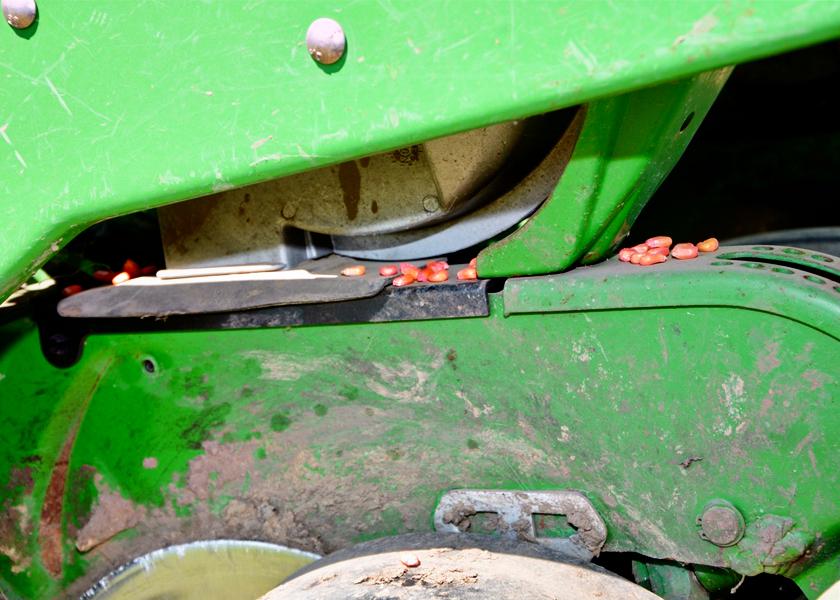4 Fixes When Your Planter Isn’t Running Quite Right

Your planter might not be sidelined but something is off. Here are some annoying planter ailments and their cures.
Seed delivery hoses clogging, seed bridging in seed meter boxes, inconsistent planting rate. Aftermarket seed treatments and dealer-applied seed treatments can leave seeds with a sticky seed coat. Or, humid weather can cause factory-applied seed coatings to become sticky. If the problem is with dealer-applied treatments, it’s the dealer’s problem to correct. If high humidity makes seeds sticky, increase the amount of talcum/graphite in the seed hoppers.
Planting rates on the seed monitor vary with the direction of travel through the field. It sounds crazy but it’s a fact that on windy days, seeding rates are sometimes disrupted when planting with the wind blowing toward the rear of the planter. On rolling ground, seeding rates may vary depending on whether the seed “bowls” on seed meters are uphill or downhill. Newer seed tube and seed meter designs are supposed to reduce problems with tailwinds. Changing the position of baffles in seed meters may improve seeding rates on sidehills.
Sudden failure of seed monitor on one section of planter or the entire planter. Older seed monitors that have individual red, green and black wires running to each seed tube sensor share a common ground. That means if one of those small black wires on any row gets pinched or cut, all the sensors on that wing of the planter may show “failed.” Multiple-row failures may also be due to a damaged main harness from the tractor to the planter. If there is no obvious damage to the main harness, try unplugging one-by-one each seed tube sensor. If the rest of the rows begin working, the wires to the unplugged sensor are damaged or that sensor itself has failed.
Random loose seeds on the ledges and surfaces below the seed meter. Stray seeds suggest an alignment problem between the seed meter discharge and the top of the seed tube. A bent meter housing, a twisted latch assembly, a faulty seed chamber door, or a damaged upper seed tube can interfere with the smooth transfer of seeds. Any loose seeds laying on a planter unit indicate something is misaligned or broken and possibly diminishing seed metering accuracy into the row.







